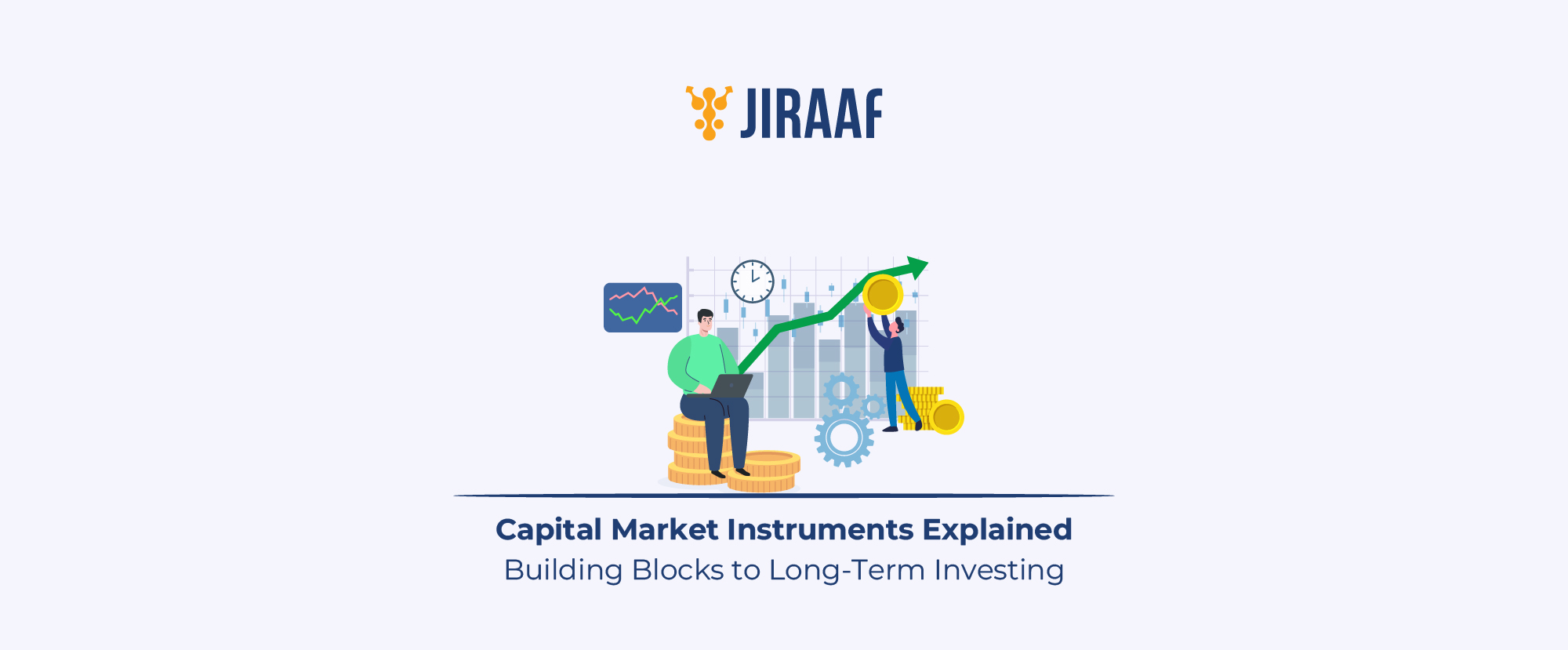Have you ever wondered how governments and large corporations raise vast sums of money for their needs without flooding stock markets? Bond IPOs hold the answer. More than just a funding mechanism, these public debt issuances offer retail investors a chance to engage with credit markets on their own terms, balancing risk, unlocking coupon payments, and gaining exposure to credit profiles once seen as institutional territory. The sophistication hidden beneath these offerings reveals a subtle art of income generation you as an investor can leverage for your benefit.
In this blog, we’ll break down what bond IPOs are, how they work, how you can invest in them, and much more.
What is a Bond IPO?
A bond IPO refers to a company, government, or any organization issuing bonds to the public for the very first time. Unlike private placements, bond IPOs allow individuals as well as institutions to buy bonds directly from the primary market. They also open up a much wider investor base for issuers to raise debt.
You can apply for any issuer’s bond IPO during the specified allotment window from your demat account. Once you receive the allotment, these bonds can be traded on the exchange, much like other non-convertible debentures (NCDs), using a simple buy-sell order.
In India, all bond IPOs must comply with the regulatory framework and disclosure norms laid down by the Securities and Exchange Board of India (SEBI), ensuring standardization and investor protection.
How Does a Bond IPO Work?
A bond IPO in India must go through the following process before being available to the public:
- The issuer must appoint one or more merchant bankers that are registered with the board as lead managers of the underlying issuance.
- The issuer then sends a draft offer to the stock exchange after the issuance is approved by the board of directors.
- The issuer also must file an offer document with detailed terms and conditions of the issue, its financial performance of past 3 years, a Memorandum of Association and Articles of Association, the intended use of capital raised from bonds, etc. to the stock exchange.
- This draft must contain all fair disclosures necessary for the public to make informed investment decisions.
- The issuer must provide all the required information/documents to the appointed lead managers for conducting the due diligence as specified by the board.
Apart from the rigorous process of giving subscribers clarity about the issuance, investing in bond IPO has other benefits as well. Let’s take a look.
Benefits of Investing in a Bond IPO
A bond IPO presents a lot of opportunities for investors in the form of predictable returns, more stability than equity, etc. Here are five additional benefits of investing in a bond IPO:
1. Low Risk
Bonds provide steady returns with lower volatility. They are generally considered more stable than equity while offering higher returns than traditional FDs (depending on the credit risk and tenure).
You can invest in corporate bonds with Jiraaf and get up to 15% returns.
2. Minimum Entry Barrier
With a starting investment as low as ₹1,000, bond IPOs are highly accessible. Even small investors can participate without needing large capital.
3. Added Flexibility
Once listed on NSE or BSE, you can buy and sell these bonds just like shares. This gives investors the flexibility to exit before maturity if they need some liquid funds. However, the actual liquidity depends on market demand and trading values, so selling before maturity isn’t always guaranteed, and you might even have to sell them at a less favorable price due to wider bid-ask spreads.
4. SEBI Regulated
Bond IPOs fall under SEBI’s strict regulatory framework. SEBI’s governance ensures transparency, standardized disclosures, and strong investor protection.
5. Promotes Diversification
Adding bond IPOs to your portfolio reduces your reliance on equities and helps balance overall risk. They bring stability during volatile markets, since bonds often move differently from stocks.
However, no investment instrument comes without risks. Let us talk about the associated risks and considerations before you invest in a bond IPO.
Risks to Understand Before Applying
As an informed investor, you should understand these potential risks before applying:
1. Interest Rate Risk
If market interest rates rise after you invest, the value of your bonds in the secondary market may fall, affecting potential resale gains.
2. Liquidity Risk
Although listed, certain bonds may see lower trading volumes, making it harder to sell quickly at a fair price.
3. Credit Risk
There’s always a chance that the issuer may default or get downgraded with low rated bonds. This impacts both interest payments and principal repayment.
4. Inflation Risk
Fixed coupon payments may lose real value over time if inflation rises, reducing your actual purchasing power.
Beyond risks, it is equally important to understand how your bonds and the returns on them will be taxed in India. Let’s discuss.
Taxation Rules for Bond IPO Investors
When you sell shares bought through an IPO, your taxes depend on how long you held them and when you sold them.
- Short-term Gains
If you sell these assets within 12 months, the profit you earn is taxed as short-term.
- Before July 23, 2024, you have to pay 15% tax
- On or after July 23, 2024, you have to pay 20% tax
- Long-term Gains
If you hold these assets for more than 12 months, the profit you earn is taxed as long-term.
- Before July 23, 2024, there is 10% tax, with ₹1 lakh exemption
- On or after July 23, 2024, there is 12.5% tax, with ₹1.25 lakh exemption
Note – No indexation benefits apply in both cases.
Now let’s go through the process of applying for a bond IPO in India.
How to Apply for a Bond IPO in India
Applying for a bond IPO (also known as a public issue of bonds) is a simple, fully digital process that most investors can complete in just a few minutes. Here’s a step-by-step guide to help you invest confidently and ensure your application is processed smoothly.
1. Choose a Trusted OBPP Platform
Begin by selecting an Online Bond Placement Platform (OBPP) of your choice. Make sure the platform is regulated by the SEBI and provides verified details of all ongoing bond public issues, including coupon rates, maturity periods, and issuer profiles.
2. Explore Available Bond IPOs
Once you’ve created and logged into your account, head to the “Public Issues” or “Bond IPO” section. Here, you can review all active bond offerings and compare features like yield, credit rating, payout frequency, and minimum investment requirements.
3. Select Series and Investment Amount
Bond IPOs often come with multiple series, each with different tenures and payout options (monthly, quarterly, or annual). the amount you want to invest. Generally, you can invest in bond IPOs with as low as ₹1,000 or ₹10,000, depending on the issue.
4. Complete Your Application
Fill in the required details, such as your PAN, demat account, bank account information, and contact details. Double-check this information carefully, as errors can lead to delays or rejection of your application.
5. Make the Payment
You can complete your application by authorizing the payment through:
- UPI: For investments up to ₹5 lakh
- Application Supported by Blocked Amount (ASBA): Recommended for investments above ₹5 lakh, where funds remain blocked in your bank account until allotment
6. Allotment and Credit of Bonds
Once the allotment process is complete, the allotted bonds will be directly credited to your demat account. You will then start receiving interest payouts as per the schedule defined in the bond issue terms.
Documents Required to Apply for a Bond IPO in India
Keep the following documents ready before applying:
- PAN Card
- Demat Account Details
- Bank Account Details
- Address Proof / KYC Documents
Having these documents prepared in advance ensures a seamless application process and helps avoid last-minute delays.
Who can Invest in Bond IPO?
Unlike private placement, a bond IPO allows a wider base of investors to apply for subscription. Here is the list of investors who can apply for a bond IPO:
1. Non-Resident Indians (NRIs)
Non-Resident Indians may be permitted to invest in Indian bond IPOs, provided they meet the criteria laid down by the RBI and any specific conditions mentioned in the offer document.
2. Retail Individual Investors (RIIs)
Retail investors are individuals applying within the limit defined in the prospectus, most often investments capped at ₹2 lakh limit. Applications within this amount are considered under the retail category.
3. High Net Worth Individuals (HNIs)
Any individual investor who applies for bonds exceeding the retail cap automatically falls into the HNI segment. This means applications above ₹2 lakh are treated as HNI bids.
4. Qualified Institutional Buyers (QIBs)
This category includes large institutional entities such as banks, mutual funds, pension funds, and insurance companies. Regulations usually reserve a fixed quota of the bond issue for QIBs.
Conclusion
Bond investing in India is actively transforming. In recent years, the bond market has turned from what was once an institutional market into an open, transparent, and easily accessible opportunity for everyone. With SEBI-regulated platforms like Jiraaf, simple digital processes, and entry points as low as ₹1,000, fixed-income investing has never been more inclusive.
For aspiring debt investors, the message is clear: start small, stay informed, and think long-term. In the next decade, wealth won’t come from chasing risk; it’ll come from balancing it. Bond IPOs are where smart, steady investing begins.









